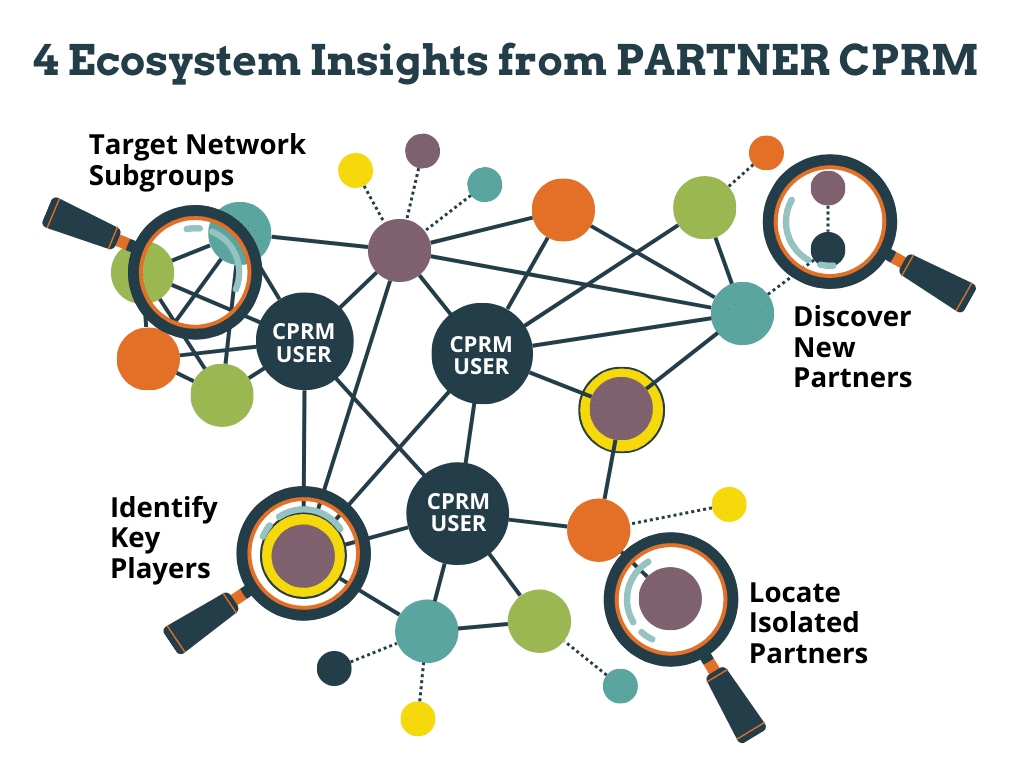As August, National Immunization Month, unfolds, it’s an opportune moment to reflect on the importance of immunization and how we can enhance its reach and impact. At Visible Network Labs, our expertise lies in the realm of network science, specifically focusing on the social network analysis of coalitions and partner networks. Through our research and experience, we’ve discerned that the dynamics of collaboration can significantly influence the outcomes of vaccination programs. In this article, we’ll delve into seven evidence-based tips that harness the power of collaborative approaches to bolster immunization rates.
Table of Contents
1. Leverage the Power of Diverse Stakeholders
Collaboration is most effective when it brings together a diverse set of stakeholders. From healthcare professionals and policymakers to community leaders and educators, each brings a unique perspective and set of resources to the table. By ensuring that all voices are heard and valued, coalitions can develop more comprehensive and effective strategies.
How to Operationalize This:
- Host Inclusive Brainstorming Sessions: Organize sessions where all stakeholders can share their ideas and perspectives. This ensures everyone feels involved and valued.
- Rotate Leadership Roles: Allow different stakeholders to take the lead in meetings or projects, ensuring diverse perspectives guide the coalition’s direction.
- Conduct Regular Stakeholder Surveys: Use surveys to gather feedback and insights from all partners, ensuring that all voices are considered in decision-making.
Citation: Lasker, R. D., Weiss, E. S., & Miller, R. (2001). Partnership synergy: a practical framework for studying and strengthening the collaborative advantage. The Milbank Quarterly, 79(2), 179-205.
2. Prioritize Clear Communication
Clear and consistent communication is the bedrock of any successful collaboration. It’s essential to establish regular communication channels, such as meetings, newsletters, or digital platforms, to keep all partners informed and engaged.
How to Operationalize This:
- Establish a Communication Protocol: Define clear guidelines on how and when communication will occur, ensuring consistency.
- Use Collaborative Tools: Implement tools like Slack or Microsoft Teams to facilitate real-time communication and collaboration among partners.
- Hold Monthly Updates: Organize monthly meetings or newsletters to keep all partners updated on progress, challenges, and upcoming initiatives.
Citation: D’Amour, D., Ferrada-Videla, M., San Martin Rodriguez, L., & Beaulieu, M. D. (2005). The conceptual basis for interprofessional collaboration: core concepts and theoretical frameworks. Journal of Interprofessional Care, 19(sup1), 116-131.

Get our monthly newsletter with resources for cross-sector collaboration, VNL recommended reading, and upcoming opportunities for engaged in the “network way of working.”
3. Utilize Data-Driven Decision Making
Harnessing the power of data can provide coalitions with invaluable insights into the effectiveness of their strategies and highlight areas for improvement. By regularly analyzing and sharing data, partners can make informed decisions that drive positive outcomes.
How to Operationalize This:
- Implement Data Dashboards: Use dashboards to visualize and share data insights with all partners, ensuring transparency.
- Organize Data Workshops: Conduct workshops to train partners on how to interpret and use data effectively.
- Encourage Feedback on Data Insights: Create a feedback loop where partners can provide insights or raise concerns based on the data presented.
Citation: Fewster-Thuente, L., & Velsor-Friedrich, B. (2008). Interdisciplinary collaboration for healthcare professionals. Nursing Administration Quarterly, 32(1), 40-48.
4. Foster Trust Among Partners
Trust is a crucial component of any successful partnership. By fostering an environment of transparency, respect, and mutual understanding, coalitions can ensure that all partners are working towards a shared goal with a unified vision.
How to Operationalize This:
- Organize Listening Sessions: Create sessions where partners can voice their concerns, ideas, or feedback, ensuring they feel heard.
- Develop Accountability Mechanisms: Implement systems where partners hold each other accountable for commitments and responsibilities.
- Celebrate Successes Together: Recognize and celebrate the achievements of the coalition, reinforcing trust and camaraderie among partners.
Citation: Zak, P. J. (2008). The neurobiology of trust. Scientific American, 298(6), 88-95.

5. Engage the Community
For vaccination programs to be truly effective, it’s essential to engage the community at every step. This means not only informing them about the importance of immunization but also listening to their concerns and feedback. By building a two-way dialogue, coalitions can ensure that their strategies are both relevant and well-received.
How To Operationalize This:
- Host Community Forums: Organize forums where community members can share their views, concerns, and suggestions regarding immunization programs.
- Collaborate with Community Influencers: Partner with local influencers or leaders to advocate for immunization and address any misconceptions.
- Implement Feedback Boxes: Place feedback boxes in community centers or clinics, allowing community members to share their thoughts anonymously.
Citation: Israel, B. A., Schulz, A. J., Parker, E. A., & Becker, A. B. (1998). Review of community-based research: assessing partnership approaches to improve public health. Annual Review of Public Health, 19(1), 173-202.
6. Invest in Capacity Building
To ensure the long-term success of any collaborative effort, it’s crucial to invest in capacity building. This includes providing partners with the necessary training, resources, and support they need to effectively contribute to the coalition’s goals.
How To Operationalize This:
- Organize Training Workshops: Conduct workshops on relevant topics, equipping partners with the skills and knowledge they need.
- Provide Access to Resources: Ensure that all partners have access to necessary resources, be it funding, tools, or information.
- Mentorship Programs: Pair less experienced partners with seasoned members for guidance and support.
Citation: Goodman, R. M., Speers, M. A., McLeroy, K., Fawcett, S., Kegler, M., Parker, E., … & Wallerstein, N. (1998). Identifying and defining the dimensions of community capacity to provide a basis for measurement. Health Education & Behavior, 25(3), 258-278.
7. Adopt a Flexible Approach
The landscape of public health is ever-evolving, and coalitions must be prepared to adapt to new challenges and opportunities. By adopting a flexible approach and being open to feedback and innovation, coalitions can ensure that their strategies remain relevant and effective.
How To Operationalize This:
- Regularly Review Strategies: Set aside time to review and adjust strategies based on feedback, data, or changing circumstances.
- Encourage Innovative Thinking: Foster an environment where partners feel comfortable suggesting new ideas or approaches.
- Stay Updated with Industry Trends: Ensure that the coalition is aware of the latest trends and best practices in immunization and public health.
Citation: Butterfoss, F. D., & Kegler, M. C. (2002). Toward a comprehensive understanding of community coalitions: Moving from practice to theory. Emerging theories in health promotion practice and research, 157-193.

Examples of 7 Different Types of Immunization Community Partnerships
Collaborative approaches in immunization are diverse, encompassing a range of strategies and partnerships. Here are some of the main types of immunization collaborative approaches, along with real-world examples for each:
1. Public-Private Partnerships (PPPs)
These partnerships involve collaboration between a government agency and a private-sector company for the purpose of financing, designing, implementing, and improving immunization services and infrastructure.
- Example: Gavi, the Vaccine Alliance, is a global PPP committed to increasing access to immunization in poor countries. It brings together public and private sectors, including UN agencies, governments, vaccine manufacturers, and civil society.
2. Community Engagement and Mobilization
This approach focuses on involving community members in immunization initiatives, ensuring that interventions are culturally sensitive and tailored to the community’s needs.
- Example: The MenAfriVac campaign in sub-Saharan Africa engaged community leaders, religious leaders, and local influencers to promote the meningitis A vaccine, leading to the immunization of millions of people in the meningitis belt.
3. Healthcare Provider Collaborations
Collaborations between different healthcare providers, such as hospitals, clinics, and private practitioners, to ensure consistent and widespread immunization coverage.
- Example: The Seattle Children’s Hospital’s Partnership Access Line (PAL) allows primary care providers to consult with specialists about vaccine concerns, ensuring consistent messaging and addressing vaccine hesitancy.
4. Cross-Sector Collaborations
Partnerships that involve stakeholders from various sectors, such as health, education, finance, and social services, to address broader determinants of immunization.
- Example: In the Philippines, the “Garantisadong Pambata“ program is a collaboration between the health and education sectors. It integrates immunization with other child health interventions and uses schools as platforms for vaccine delivery.
5. Research and Academic Collaborations
Partnerships between immunization programs and academic or research institutions to gather evidence, evaluate interventions, and develop new strategies.
- Example: The Malaria Vaccine Implementation Programme (MVIP) is a collaboration between the World Health Organization (WHO), PATH, and GSK to pilot the RTS,S malaria vaccine in selected areas of Ghana, Kenya, and Malawi.
6. Technology and Digital Health Collaborations
Leveraging technology and digital health solutions to improve vaccine delivery, monitor coverage, and engage communities.
- Example: The eVIN (Electronic Vaccine Intelligence Network) system in India is a collaboration between the Indian government and UNDP. It uses technology to ensure the consistent availability of vaccines across all health centers in the country.
7. Global and Regional Alliances
Collaborations between countries or regions to address immunization challenges that cross borders or to pool resources for greater impact.
- Example: The African Regional Strategic Plan for Immunization (2014-2020) was developed by the World Health Organization’s Regional Office for Africa (WHO/AFRO) in collaboration with African countries to address shared immunization challenges.

Get our monthly newsletter with resources for cross-sector collaboration, VNL recommended reading, and upcoming opportunities for engaged in the “network way of working.”
Creating Strong Immunization Community Partnerships
In conclusion, collaboration, when done right, has the potential to significantly enhance the reach and impact of immunization programs. By leveraging the power of diverse stakeholders, prioritizing clear communication, utilizing data-driven decision-making, fostering trust, engaging the community, investing in capacity building, and adopting a flexible approach, coalitions can drive meaningful change in their communities. At Visible Network Labs, we’re committed to harnessing the power of network science to improve the dynamics of collaboration and, in turn, the outcomes of vaccination programs.
The Role of Network Science in Enhancing Collaboration
At Visible Network Labs, our deep dive into network science has revealed intriguing insights into the dynamics of collaboration. Network science, at its core, studies the patterns of relationships between entities, be it individuals, organizations, or even computers. By analyzing these patterns, we can glean valuable information about the structure, resilience, and efficiency of networks.
When applied to the realm of healthcare and immunization, network science can:
- Identify Key Players: Through metrics like centrality, we can pinpoint which organizations or individuals hold the most influence within a network. These key players can then be leveraged to drive initiatives, spread information, or rally support. Citation: Freeman, L. C. (1978). Centrality in social networks conceptual clarification. Social Networks, 1(3), 215-239.
- Spot Potential Weaknesses: By analyzing the structure of a network, we can identify potential points of failure or bottlenecks that might hinder the flow of information or resources. Citation: Albert, R., Jeong, H., & Barabási, A. L. (2000). Error and attack tolerance of complex networks. Nature, 406(6794), 378-382.
- Enhance Collaboration Efficiency: Network analysis can highlight redundant connections or gaps in the network, allowing coalitions to streamline their efforts and ensure that resources are utilized optimally. Citation: Burt, R. S. (2004). Structural holes and good ideas. American Journal of Sociology, 110(2), 349-399.

The Way Forward
As we navigate the challenges and opportunities presented by the ever-evolving landscape of public health, the importance of collaboration cannot be overstated. Immunization, a cornerstone of public health, can significantly benefit from a collaborative approach, harnessing the collective expertise, resources, and influence of diverse stakeholders.
However, collaboration, in and of itself, is not a panacea. It’s the quality, structure, and dynamics of these collaborations that determine their success. And this is where the insights from network science, as championed by us at Visible Network Labs, come into play.
By understanding the intricacies of our networks, by identifying our strengths and addressing our weaknesses, and by fostering an environment of trust, transparency, and mutual respect, we can ensure that our collaborative efforts are not just effective but also sustainable.
In the words of Helen Keller, “Alone we can do so little; together we can do so much.” As we commemorate National Immunization Month, let’s pledge to harness the power of collaboration, guided by the insights of network science, to ensure a healthier future for all.
Work with our Team: Learn More!
Thank you for joining us on this exploration of collaboration in the context of immunization. We, at Visible Network Labs, are always eager to delve deeper, explore further, and collaborate more effectively. If you’re interested in learning more about our work or how network science can benefit your organization, please reach out to us.






